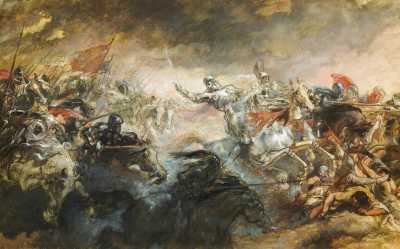We're experts on all things Management & HR
Building organisation strategy on sand
Written by John Berry on 31st January 2024.0
4 min read
Vision, mission, aims, and values. The four trite statements. Strategy built from them is likely based on sand. Strategy begins with the most basic questions. What are our stakeholder needs ? And what problem do they have that we can solve?

Free Level 7 Manager Development Programme
Written by John Berry & Sue Berry on 18th March 2018. Revised 2nd December 2023.
7 min read
Around 80% of UK managers are untrained in people-management. Just think about the improvement in your organisation's lot if it were the other way. We offer an online programme covering hiring, managing and developing people in 18 webinars. It's for managers who want the Level 7 knowledge and skills without the assessment from formal courses. And it's completely free of charge. Can you think of managers in your own firm who don’t have the skills and knowledge to effectively manage people?

Conducting high quality grievance and disciplinary investigations
Written by John Berry on 23rd August 2017. Revised 8th November 2023.
3 min read
Investigations are an essential part of company procedures. Investigations start with a broad investigation question and end with a report to management about events. Good investigation centres on high quality information-gathering and highly effective methods of reducing this information to a few pages of A4 for the chair to digest. It’s a simple concept but a task requiring high skill and knowledge. Here's how.

Correctly Managing Disciplinary Action
Written by Sue Berry on 6th May 2017. Revised 8th November 2023.
38 min read
Disciplining staff is one of the key rights, and one of the key methods a manager has of effecting control of unacceptable behaviour. This right must however be used only when other management systems have failed.

So you think you can interview?
Written by John Berry on 12th March 2018. Revised 31st October 2023.
6 min read
Most managers think they can interview. Many even believe that they are good at it. And yet precious few have been trained and fewer still understand the true role of interviewing in ensuring fairness and valid assessment. Simply, structured interviews win. But they must be built vacancy by vacancy. Here's how to improve the predictive ability of your interviews.

The use of psychometric assessment in recruitment and selection
Written by John Berry on 14th March 2023. Revised 29th October 2023.
4 min read
Managers have one aim in recruitment and selection – hiring someone who will do well in the job, and contribute to business outcomes. This aim is satisfied during recruitment and selection by exploiting a simple principle – ensuring that the person who is hired has personal characteristics which match those for optimal performance in the job. Have candidates do our Preselect Assessment before first interview. Then have them do our Main Assessment prior to second interview. Both report match with the ideal.
